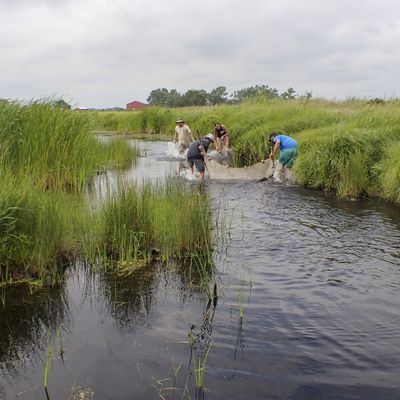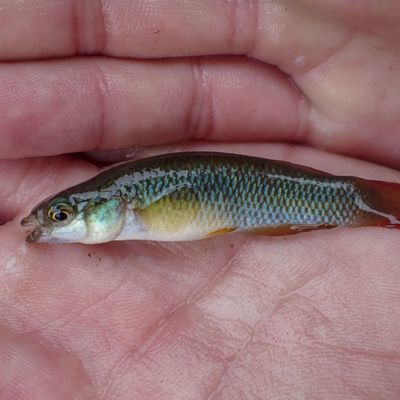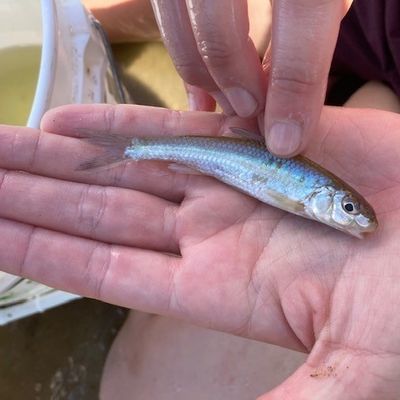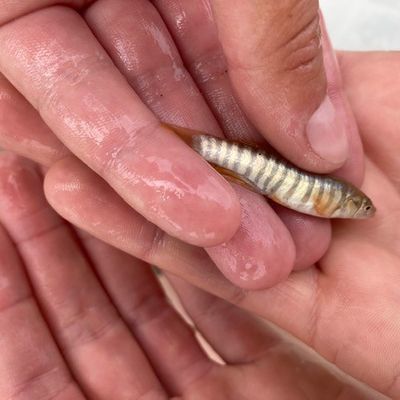Welcome back!
Over the past few months I have explored life above and below the ground of the prairies, but this week it was time for me to dive underwater! As you may know, the Crane Trust does more than just maintain and protect the biological integrity of the Big Bend area of the Platte River, the mission also includes maintaining and protecting the hydrological integrity as well! This does not just mean protection of the Platte River itself, but also includes restoring and conserving lowland areas adjacent the river, such as frequently flooded wet meadows and groundwater dependent sloughs, which are shallow to deep marsh systems. Unfortunately, due to landscape changes such as road installations and groundwater pumping, sloughs have depleted in numbers throughout Nebraska. Regardless, these systems are incredibly rich in diversity of fish and macroinvertebrate species, which are important indicators to the overall health of the ecosystem! So how exactly do we catch these fish and macroinvertebrates? Well let me tell you!
The Trust is currently monitoring two sloughs, calving pasture and big slough, since they are currently the only two still connected to groundwater. These sloughs are surveyed twice from August through September. During low flow years, a segment of the narrower north channel of the Platte River is also surveyed. Fish seining takes several simple tools such as seine nets, hand/dip nets, YSI (a tool that measures water quality), buckets, fish and macroinvertebrate species guides/keys, a meter stick, a turbidity tube, and sieves (a tool used to search for macroinvertebrates).
After all of the equipment is ready to go, the first step in the process is to measure the water quality. Turbidity is taken first, then the YSI is placed into the water. This specific tool can measure water temperature, pH, and dissolved oxygen. These measurements give us a better understanding of water quality. Now comes the fun part! With two people holding each end of the sein net and two people holding hand/dip nets, all four people rush towards one another attempting to migrate as many fish into the seining nets as possible. All fish caught are identified to species and tallied by a recorder. While this is occurring, one or two people are sifting with sieves through the soil at the bottom of the water systems to try and find any of the Trust’s targeted macroinvertebrates. This entire process is repeated 6 – 8 times to ensure each channel of water is represented as accurately as possible.


You know the ‘how’ part, now let’s talk about the ‘why’! Tracking the presence and abundance of native versus exotic/invasive fish species is pertinent when assessing the quality of the water system. Once this is documented, it is important to understand how the systems condition and fish community composition is responding to hydrological variations such as flooding and droughts. It is also important in understanding how the fish communities respond to differing management actions (e.g. fire) and grazing regimes (e.g. cattle versus bison, stocking rates, etc.). Although these fish may be small, they can tell us a lot about the quality of the water systems and help us determine the best-suited management actions to keep them healthy! Below are just a few of the fish species that have been identified throughout Crane Trust properties!





Pictured left to right: Plains Topminnow, Silver Chub, Northern Plains Killifish, Iowa Darter, Odonata (dragon fly larvae) (Photo credit to Emma M. Brinley Buckley and Andrew Caven)
This entire process may seem a little fishy to some, but to be able to see and experience life within the Platte River and its adjacent sloughs was incredible to say the least! To know that I have a hand in helping continue the conservation of these systems that are vital to different species including many migratory birds such as waterfowl and even Whooping cranes who utilize these areas during major life events like breeding and for wintering grounds is life-changing!
To learn more about the fish species found around the Trust hydrological systems, visit this link: https://linktr.ee/cranetrustfish
Until next time!
Cheers,
Amanda Medaries

